What Is The Most Common Type Of Planet In The Universe?

What we’ve seen isn’t necessarily what we get, but the most common world doesn’t look like ours.
There’s a very common myth out there in astronomy: the idea that the Sun is just a typical star. This is true in the sense that there isn’t anything special about our Sun compared to the other stars in the Universe, as it’s made of the same ingredients as all the other stars. It’s about 70% hydrogen and 28% helium, with about 1–2% “other” elements, and it derives its energy from nuclear fusion occurring in its core. In this sense, it’s typical, as it’s like the overwhelming majority of the ~10²⁴ stars in the visible Universe.
In reality, however, the Sun is brighter, more massive, and shorter-lived than about 95% of stars in the Universe. If you were to pick out a star at random in the Universe, there’s about an 80% chance that it would be a red dwarf: smaller, cooler, dimmer, and much lower in mass than our Sun. Most stars are not like our Sun.
But what about planets? If all you did was look at the exoplanets we’ve found so far — and there are over 4,000 of them — you might conclude that planets only slightly larger than Earth were the most common type. But that’s almost certainly not the case. The Universe can easily fool us if we’re not careful, but we now know enough information that we can be careful. Here’s how we know what the most common type of planet in the Universe is.
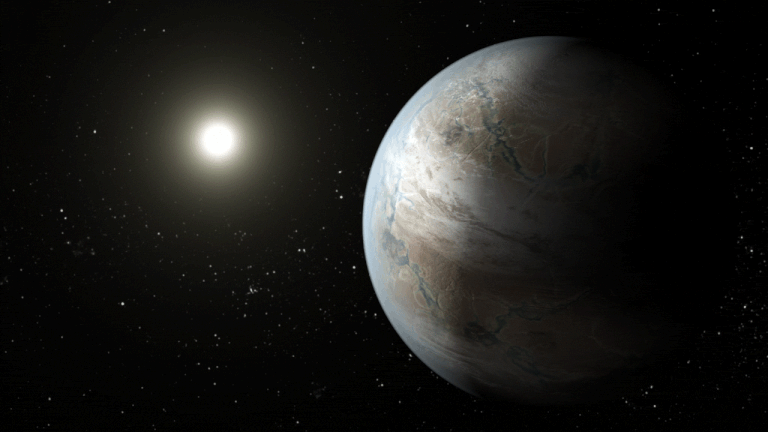
In the early days of exoplanet studies, the first planets beyond our Solar System didn’t look like anything we had seen before. The first batch of these planets were found in the 1990s, and exclusively consisted of large, massive planets that dwarfed even Jupiter, the most massive planet in our Solar System. Moreover, they weren’t far from their parent star like all of our gas giants were; they were extremely close in, taking just days to complete a full orbit. In fact, the first such planets orbited much more quickly than even Mercury, our innermost planet, orbits the Sun.
Were these so-called “hot Jupiters” the most common type of planet out there? Not at all. There was something special about them, though: they were the type of planet that our earliest detection methods were sensitive to. The earliest successful technique for finding planets outside of our Solar System was what we called the stellar wobble method: the fact that as a star gravitationally tugs on an orbiting planet, the planet tugs back with an equal and opposite force. Planets don’t quite make ellipses around their parent stars, but rather both members of the planet-star system revolve around their mutual center-of-mass.

These stars are too far away, and move too little in the transverse (side-to-side) direction, for us to ever detect that motion. But the motion in what we call the radial direction, along our line-of-sight, can be detected. The light that comes from a star depends on how that star is moving.
- When a star moves towards us, the light is shifted towards higher frequencies, shorter wavelengths, higher energies, and bluer colors.
- When a star moves away from us, the light is similarly shifted towards lower frequencies, longer wavelengths, lower energies, and redder colors.
When you observe a star over time, if it’s being orbited by a massive companion, that star is going to periodically appear to move towards you, then away from you, then towards you, etc., as the companion completes orbit after orbit. If there are multiple planets, then multiple signals will be superimposed atop one another. Stellar wobble, the original term, has fallen out of fashion, as we now refer to it as the “radial velocity” method. Only when our spectroscopic capabilities became precise enough — where we break light up into individual wavelengths to look for particular elements and absorption/emission features — were we able to discover planets through these methods.
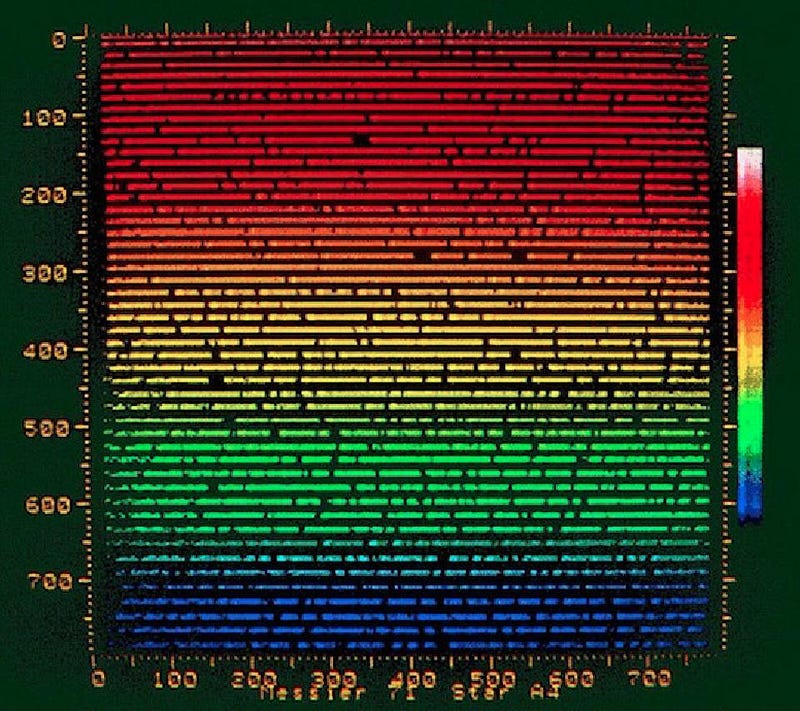
There’s a lesson here, though. We weren’t finding these “hot Jupiter” planets because they were the most common type of planet out there. Instead, we were finding them because they were the easiest type of planet to find with this particular method. If you’re going to use a method like radial velocity, you have to ask yourself what type of physical system will make the largest, most easy-to-see effect? As it turns out, for the radial velocity method, there are three factors.
- The closer a planet is to its parent star, the greater this effect will be. If you observe a star continuously for, let’s say, a year, then a planet that completes 100 orbits in that time will be easier to find than one that only completes 2 orbits. A planet that has an orbit that’s longer than a year won’t give a sufficient signal to be detected at all.
- The more massive a planet is relative to its parent star’s mass, the greater the effect will be. A planet that’s 100 times as massive as another will make a radial velocity signal that’s 100 times stronger.
- And the better your alignment is between yourself, the star, and the planet, the greater the radial component of the star’s velocity will be. If it’s perfectly edge-on, then the velocity will reach a maximum when the planet moves away from you and the star moves towards you, and a minimum when the planet’s moving towards you and the star moves away. If the orbit is perfectly face-on, you won’t get a radial component at all.
This method is biased towards the closest, most massive planets that orbit edge-on, rather than face-on, to our perspective. No wonder those “hot Jupiters” were the majority of the first planets we discovered.
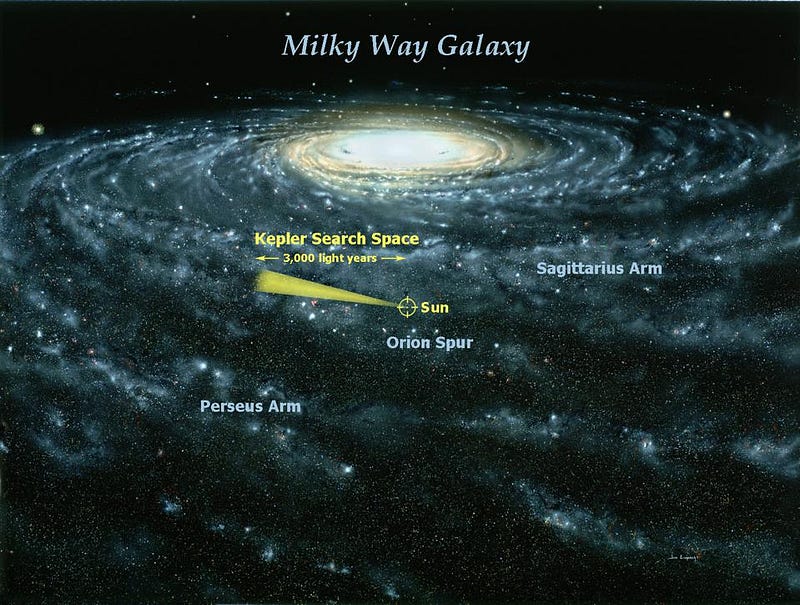
Of course, once NASA’s Kepler came online and began taking data, the modern exoplanet revolution truly began. Instead of using the radial velocity method as its primary means of discovery, Kepler leveraged what we call the transit method, which is highly selective. Of the edge-on systems, a few of them will be perfectly aligned with our perspective: so perfectly that the orbiting planets will actually transit across the face of their star, blocking a small percentage of the light.
When the alignment is perfect, the star will appear to regularly and periodically “dip” in brightness, as the star normally gives off a relatively constant amount of brightness, but when the cooler planet passes in front of it, a small portion of the star’s light is blocked.
The way Kepler worked was brilliant: it pointed at a region of our sky that looks towards a large star field along the nearest spur of our spiral arm. Within approximately a few thousand light-years, it was able to view more than 100,000 stars all at once, monitoring them for regular dips and variations in brightness.
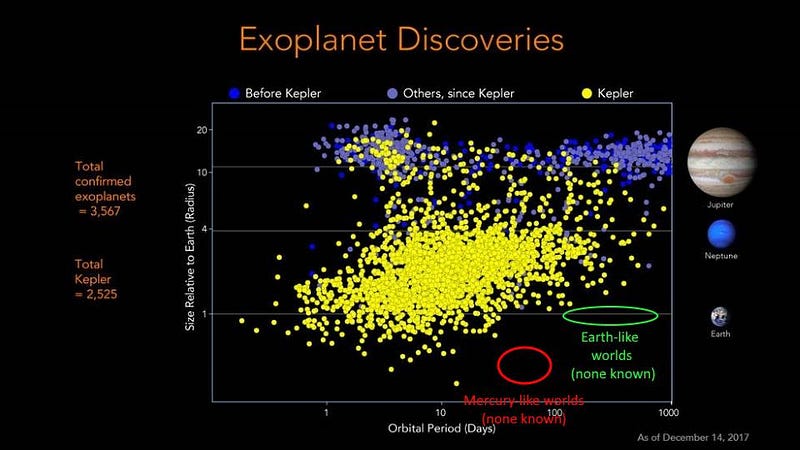
When all was said and done with Kepler, we had improved our tally from a little over 100 known exoplanets to more than 4,000. Its primary mission observed those same ~100,000+ stars for about three years, finding planets ranging from more massive than Jupiter all the way down to smaller than Earth. When we look at a chart of the planets found by Kepler, we can see that there’s a peak in the distribution at what we presently call “super-Earth” masses, although the more we learn about exoplanets, the more likely it is that these worlds are more like “mini-Neptunes,” containing significant volatile gas envelopes.
It’s very tempting, then, to conclude that super-Earth planets are the most common type in the Universe. Sure, the way we confirmed these planets once Kepler had identified them as planetary candidates was with radial velocity measurements, but since Kepler tells us where, when, and how accurately we need to look, we should be able to follow-up on all the candidate worlds that Kepler found. Based on the data, you’d think that super-Earths, and not hot Jupiters, would be the most common type of planet in the Universe.
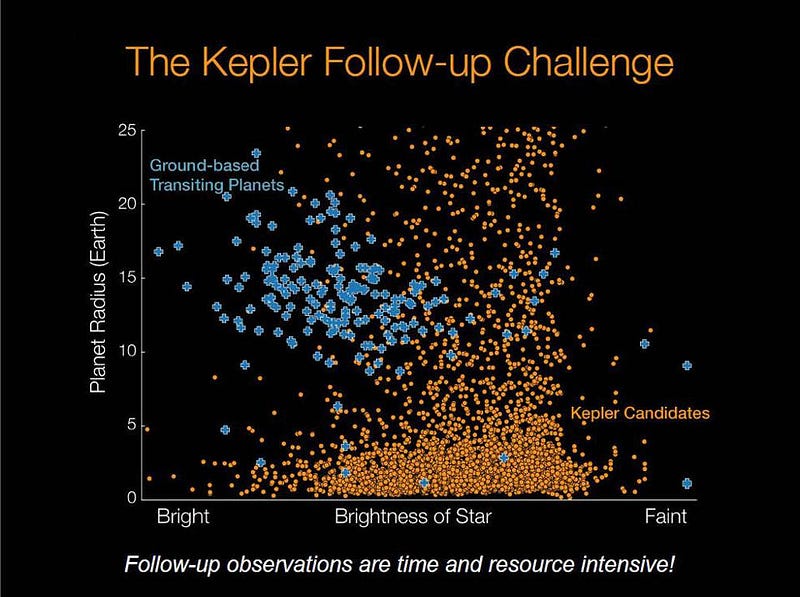
But that’s likely not right, either. Even though it isn’t susceptible to the same bias that the radial velocity data has, NASA’s Kepler mission in particular — and the transit method in general — has its own biases that fundamentally limit what it can do. Imagine that you were looking at a Solar System from far away. What are the odds that a planet will be serendipitously aligned so that the orbiting planet will transit in front of it from our perspective? What configuration is most likely?
The first bias is simple: the closer your planet is to the star, the more likely it is to transit. If you imagine that you have a star of any size, like the size of our Sun, for example, the innermost planets can have their orbits tilted by a substantial amount and still transit across the face of the star’s disk, but the outer planets must be very perfectly aligned.
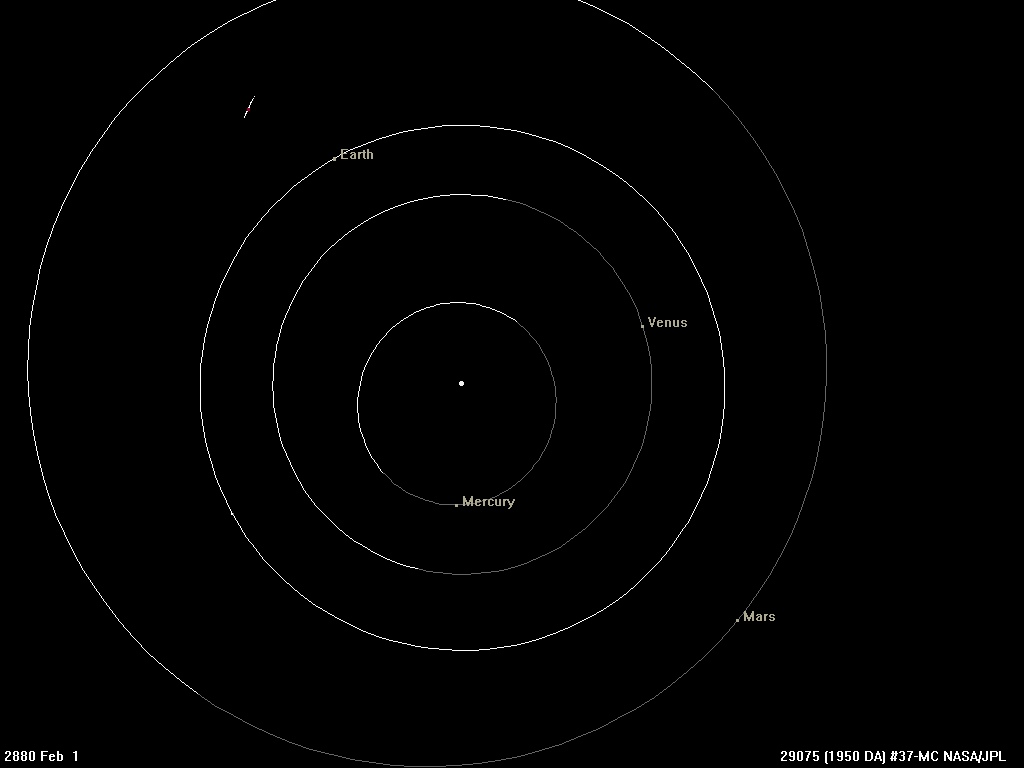
For a Sun-sized star, a planet at the distance of Mercury would have a can vary by 1.37 degrees and still transit, giving it a 0.76% chance. That same planet, at Earth’s distance, has to be aligned to within 0.53 degrees, giving it just a 0.30% chance. At Jupiter’s distance, that drops to 0.101 degrees and a 0.056% chance, while for Neptune, it plummets to 0.0177 degrees and just a 0.0098% chance.
Therefore, we’d expect to find the closest-in planets more frequently, and we’d expect planets that are farther out to be more difficult to find. In fact, with just a three year primary mission, the overwhelming majority of planets found should be in much tighter, faster orbits than the planets we find in our own Solar System.
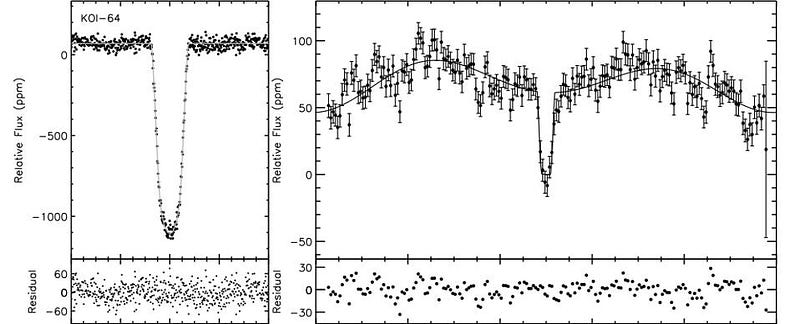
There’s also the issue of physical size. If you want to be more easily seen, you have to block enough of the star’s light to show up in Kepler’s data set. There’s a little bit of trade-off, as a smaller planet that transits across the face of its star 30 times can block just one-tenth the light (making it about 3.2 times smaller) compared to a planet that transits the face of its star only 3 times.
That means we have two biases working in tandem: you are biased towards planets that are close to their parent stars, because it’s easier to get a good alignment, and also biased towards planets that are large compared to the size of their parent star. This means, when we break the Kepler data down, we find that the same distributions of planets don’t appear equally around all types of stars.

For example, around Sun-like stars and heavier, more massive stars, Kepler is an insufficient tool for finding Earth-sized planets. These larger stars have enormous disks; it would take approximately 12,000 Earths to cover the disk of the Sun, and Kepler cannot detect a drop in brightness that occurs at only the 1-in-12,000 level. When we look at Sun-like stars, planets of super-Earth size and up are the only ones we can see. When we look a giant stars, we can only see gas giant planets.
In fact, if we want to detect Earth-sized planets or smaller — planets that we can reliably state are rocky with only thin atmospheres at most — we have to look around the smallest stars of all: those M-class, red dwarf stars. These stars preferentially have the smallest planets, but because they’re so faint, they’re difficult to measure and identify the farther away you go. Still, the following things are true:
- red dwarf stars are the most common in the Universe: 80% of stars are red dwarfs,
- red dwarf stars, as we’ve measured them, overwhelmingly have terrestrial-sized planets around them,
- consistent with the numbers of planets found around other stars,
- and approximately 6% of all red dwarf stars have an Earth-sized planet that orbits at the right distance to have Earth-like temperatures on the surface.
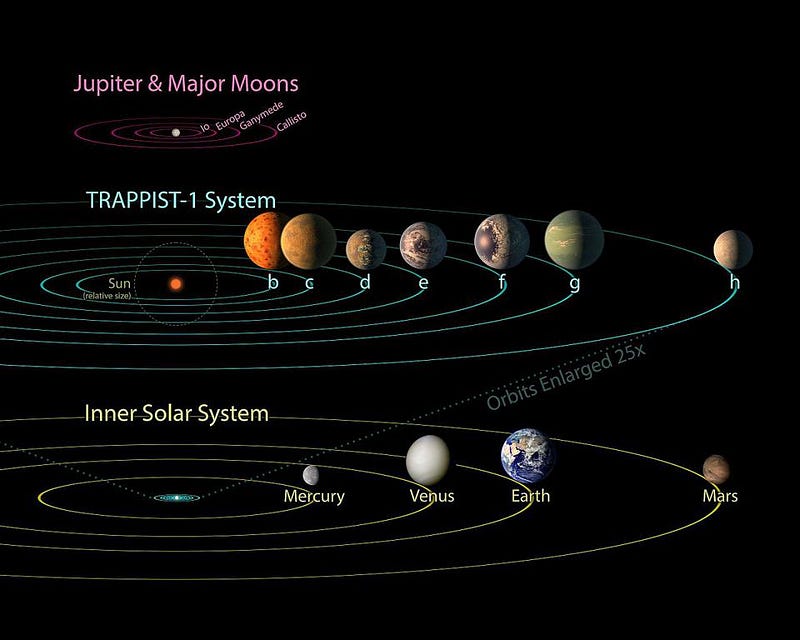
It’s important to recognize that the majority of what we’ve seen does not equate to the majority of what’s out there. In all sciences, and in astronomy in particular, we are always biased towards the phenomena that our detectors, instruments, and current capabilities are optimized to see. The low-hanging fruit is often the easiest to pick, but isn’t necessarily representative of the full suite of fruit that’s out there in the orchard.
For a long time, the most common type of planet was a hot Jupiter. Now it appears that Neptune-sized worlds are more common than Jupiters, and mini-Neptunes are even more common than that. We haven’t found as many Earth-sized worlds and smaller, but that has more to do with the limits of the telescopes we’ve built to search for them than anything. If we extrapolate based on what we know, the most common type of planet is likely rocky, Earth-sized or smaller, and orbits around red dwarf stars. Not only is the Sun not a typical star, after all, but our planets likely aren’t very typical either. Until we build the proper instruments to search for them, like NASA’s proposed LUVOIR mission, we won’t be able to meet the scientific standards — test and verify — to confirm or refute our suspicions.
Starts With A Bang is written by Ethan Siegel, Ph.D., author of Beyond The Galaxy, and Treknology: The Science of Star Trek from Tricorders to Warp Drive.





